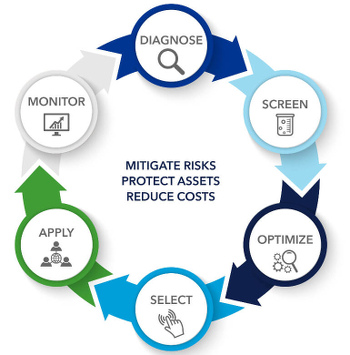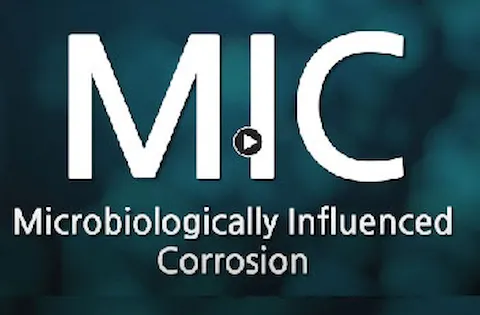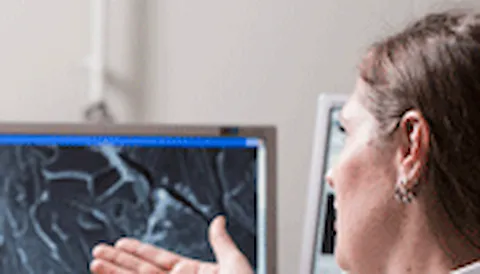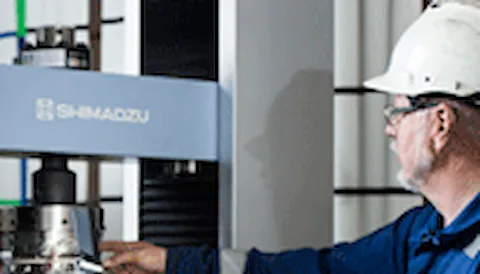Microbiologically influenced corrosion threat assessment
Microbiologically influenced corrosion (MIC) is difficult to detect and monitor and has become a global problem. Pipeline operators who focus on prevention know how important it is to assess pipeline integrity threats.
Microbiologically influenced corrosion threat assessment
MIC threat assessment, mitigation and monitoring should be a part of your operations integrity management system. DNV provides a full suite of services to assist pipeline operators in reliably diagnosing and characterizing the abiotic and microbial mechanisms that could lead to corrosion.
Our global experts are here to help you develop and implement the right approach to address MIC in its earliest stages.
Our laboratory
The DNV lab in Columbus, Ohio is a leading facility for testing and evaluation of corrosion. We provide individual solutions to your unique challenges in addressing material threats that can lead to pipeline failure.
What we do
MIC is a complex problem and there is no easy answer on whether MIC is impacting your system. While finding the right solution can be daunting, DNV’s global experience and comprehensive approach can provide you with a custom solution for your unique system needs. Our experts can help you better optimize your organization’s mitigation program so that you can protect your assets and reduce costs.
MIC threat assessment
 Reliable diagnosis of MIC is a challenge. Our experts can help determine whether MIC is a threat, determine its severity and develop an appropriate response.
Reliable diagnosis of MIC is a challenge. Our experts can help determine whether MIC is a threat, determine its severity and develop an appropriate response.
Biocide screening and optimization
When it comes to managing MIC in the field, it is important to know which chemicals and biocides are the most effective for mitigating MIC. We can help you determine the most effective solutions and then provide the proper dosing, application method and frequency.
Chemical compatibility testing
Keeping the environment and people safe is a priority for DNV. Our chemical compatibility testing services help you avoid unintended consequences from using multiple chemicals to fight MIC. Let our experts evaluate the overall effectiveness of the chemicals you are using to inhibit microbial growth in your fight against corrosion.
Advanced characterization implementation
Understanding how to treat MIC starts with proper characterization of microbiological and chemical conditions in the asset. Our MIC experts are at the forefront of using molecular methods, have extensive experience with using and interpreting the results of these methods.
Mitigation advisory
Our MIC experts help determine whether your current mitigation strategies are effective. We provide mitigation advisory services to help you optimize mitigation techniques for your unique situation.
Failure analysis
If MIC has led to a failure, your other systems could be at risk. Our advanced laboratory testing techniques can help identify the corrosion mechanisms that caused the failure and apply the lessons learned to other assets.
|
Biomarkers for next-generation, water-based detection and monitoring of MIC Joint industry project (JIP) with ExxonMobil Upstream Research Company and Microbial Insights, Inc. While molecular methods for the detection and characterization of microorganisms in oil field waters have emerged, such data tend to poorly correlate to system integrity and cannot currently be used as a leading indicator for (microbial) corrosion. Instead, MIC is most often diagnosed through analysis of metal-associated biofilms after the damage has already occurred and other (abiotic) mechanisms have been excluded as root causes. As a consequence, the management of MIC in oil field facilities remains highly challenged and the industry continues to suffer from instances of shortened service life or even failures of oil field infrastructure due to undetected, harmful microbial activity. This JIP aims to develop methods, tools and workflows ("biomarker technology") to reliably detect the occurrence of MIC in oil field operations. |
Related information

The mechanism of microbiologically influenced corrosion (MIC)
Learn from the corrosion experts at DNV about the mechanisms of MIC and the complex relationship between corrosion and microorganisms to help improve your MIC management programs.

Biomarkers for next-generation, water-based detection and monitoring of MIC
Download the joint industry project brochure





